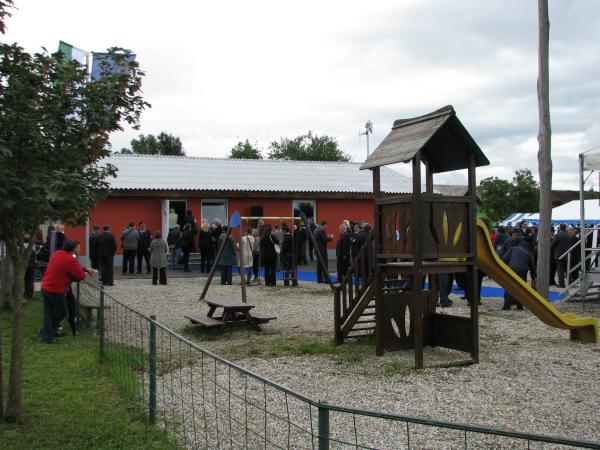
The tiny village of Pušča in the eastern Slovenian province of Prekmurje is a unique Roma community. With its tidy homes, clean streets, and a first-class kindergarten, it is often hailed as a model far beyond Slovenia’s borders. Its effective system of self-government has imbued the community with a sense of pride, giving it the nickname “Village of Harmony.”
Much of that pride centers on the local soccer club, NK Pušča. When the team was founded more than half a century ago, it was a novel concept: It consisted entirely of players from the Roma community, a group that has historically been marginalized in Slovenia and elsewhere in Europe.
NK Pušča immediately gained the support of the local population, but its road to success was a difficult one. For much of its existence, the club lacked a home field and had to play all games as on their competitors’ terrain. Despite the hardships, NK Pušča was always supported by local fans; it managed to grow rapidly through the decades and now comprises more than a hundred players.
A nearby Roma team, NK Roma, qualified for the Slovenian Third Division in 2008 - perhaps the first Roma team in Europe to make it that far -, but they were unable to compete at first because they too lacked a playing field.
Despite the obstacles, both teams managed to persevere. Thanks to assistance by the local government, NK Pušča and NK Roma now have their own facilities and regularly compete against teams from across Slovenia. Their achievement have inspired a new generation of Roma soccer players; one success story is Marinko Šarkezi, a former member of NK Maribor, where he had played against Europe’s best soccer teams in the prestigious Champions’ League.
The remarkable story of Slovenia’s Roma teams and their successful integration into the wider community has even brought them attention from beyond Slovenia. In 2001, UEFA president Michel Platini visited Prekmurje and personally met with representatives from the Roma teams. He praised their successes in the face of financial obstacles and described them as model for the rest of Europe.
Meanwhile, members in the Roma community are hoping that the clubs will continue to inspire a new generation of soccer players and bring hope to young people living in villages affected by high unemployment and limited opportunities for social mobility.


































































